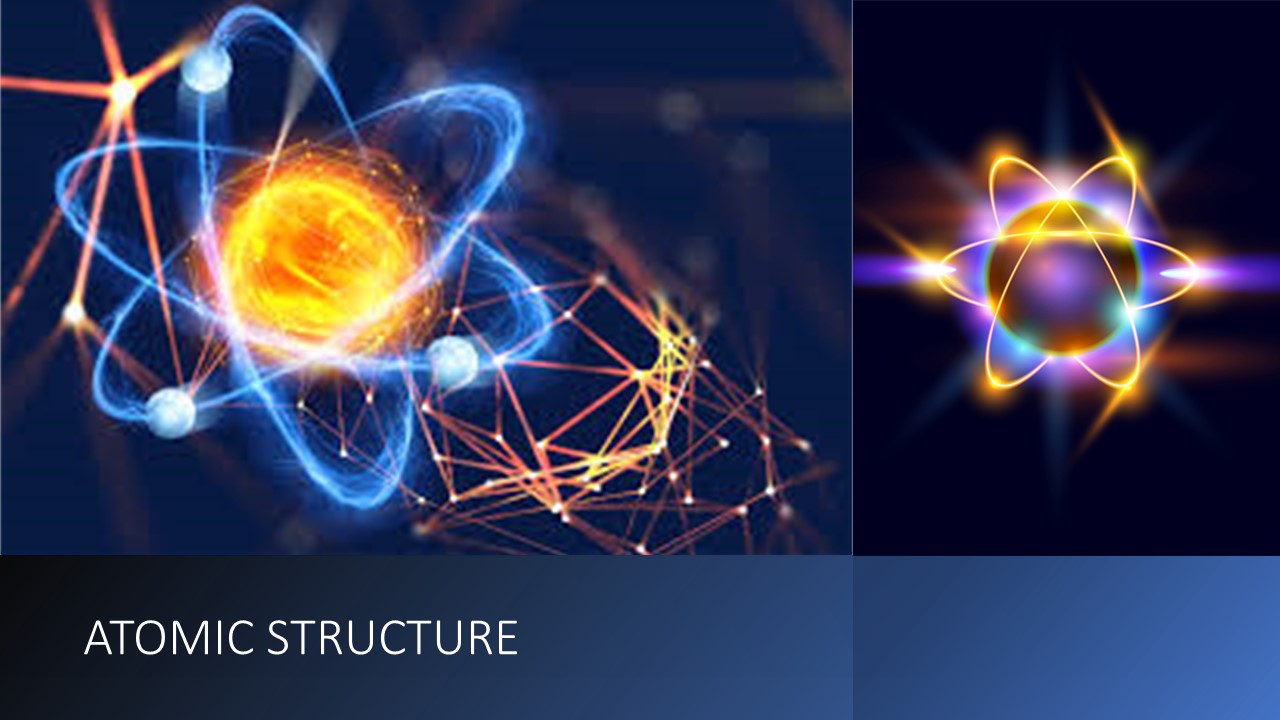STD VIII – ATOMIC STRUCTURE (Hybrid)
About Course
In this section will learn the following chapters:
1.FUNDAMENTAL SUBATOMIC PARTICLES
2.NUCLEUS
Last Updated:October 9, 2025
0 (0 Ratings)
Share Course
Page Link
Share on social media

Description
Atoms are made up of three particles: protons, neutrons, and electrons.
Nucleus: It is the centre of the atom. It contains protons and neutrons.
Protons are always positively charged. The number of protons in the atom is called its atomic number(also called proton number). In the Periodic Table, atoms are arranged in atomic number order. Protons have a relative charge of +1.
Neutrons have a neutral charge.
Electron cloud: It is the outer portion of the atom.
Electrons: They are negatively charged and are arranged around the nucleus in shells or orbits. They have a relative charge of –1
The total number of electrons in an atom is always the same as the number of protons in the nucleus.
The nucleus of the atom
The number of protons and electrons are equal in atom which is therefore electrically neutral
Protons and neutrons are called nucleons since they occur inside the nucleus
Atomic number (Z) = Number of protons in the nucleus. In a neutral atom, number of protons=number of electrons (not in ions)
Mass number (A) = number of protons+ number of neutrons
Free
Free
Free access this course
-
LevelIntermediate
-
Total Enrolled4
-
Last UpdatedOctober 9, 2025
Hi, Welcome back!
Material Includes
- 🔥 Live Interactive classes with in-class doubt solving
- ⭐ Weekly Test and Quiz with instant tracking for progress
- ⚙️ Revision of the course after testing
- 👋 Fortnightly Parents and Tutor interactions
- 🌷 Expert monitoring of student's learning progress
- 👨👩👧👧 Daily communication over call, whatsapp and mail
- 💻3 hours on-demand video
- ✍4 downloadable resources
- ⌛Access for entire Academic Year
- 📱Access on mobile and Desktop
- 📋Assignments and review of the same
- 💡Tests and Correction by Board paper checkers
- 🏅Certificate of completion and Live tracking with Grade book
Course Duration:
0
Course level:Intermediate
Enrolled:4
About Course
In this section will learn the following chapters:
1.FUNDAMENTAL SUBATOMIC PARTICLES
2.NUCLEUS
Course Curriculum
ATOMIC MODEL AND CONCEPT OF VALENCY AND RADICALS
-
ATOMIC MODEL AND CONCEPT OF VALENCY AND RADICALS – CORE CONCEPT – BOHR’S ATOMIC MODEL
04:25 -
ATOMIC MODEL AND CONCEPT OF VALENCY AND RADICALS – SUPPORT MATERIAL – BOHR’S MODEL
01:43 -
ATOMIC MODEL AND CONCEPT OF VALENCY AND RADICALS – CORE CONCEPT – ATOMIC NUMBER AND MASS NUMBER
14:46 -
ATOMIC MODEL AND CONCEPT OF VALENCY AND RADICALS – CORE CONCEPT – VALENCY SHELLS AND VALENCY
07:16 -
ATOMIC MODEL AND CONCEPT OF VALENCY AND RADICALS – CORE CONCEPT – RADICALS
07:48 -
ATOMIC MODEL AND CONCEPT OF VALENCY AND RADICALS – CORE CONCEPT – DIFFERENTIATION BETWEEN ATOMS MOLECULES AND RADICALS
20:33 -
ATOMIC STRUCTURE – PHYSICAL CLASS – OCTET RULE AND ELECTRONIC CONFIGURATION
11:52 -
ATOMIC STRUCTURE – PHYSICAL CLASS – ATOMIC NUMBER AND FORMATION OF ION
15:29 -
ATOMIC STRUCTURE – PHYSICAL CLASS – Z , A AND VALUES RELATED TO SUBATOMIC PART I
18:47 -
ATOMIC STRUCTURE PHYSICAL CLASS ATOMIC NUMBER, ATOMIC MASS, E C , VALENCE ELECTRONS AND VALENCY
27:27 -
ATOMIC STRUCTURE – PHYSICAL CLASS – CONCEPT OF A AND Z AND REPRESENTATION
23:23 -
VIII – ATOMIC STRUCTURE – ARRANGEMENT OF ELECTRONS IN SHELL – EXAMPLES
14:20 -
VIII – ATOMIC STRUCTURE – SUBATOMIC PARTICLES & ELECTRICAL AND CHEMICAL STABILITY AND TYPES IONS
34:02
ASSIGNMENT AND DISCUSSION
Student Ratings & Reviews

No Review Yet

